The defeat of the Turkish-Egyptian fleet in the Battle of Navarino
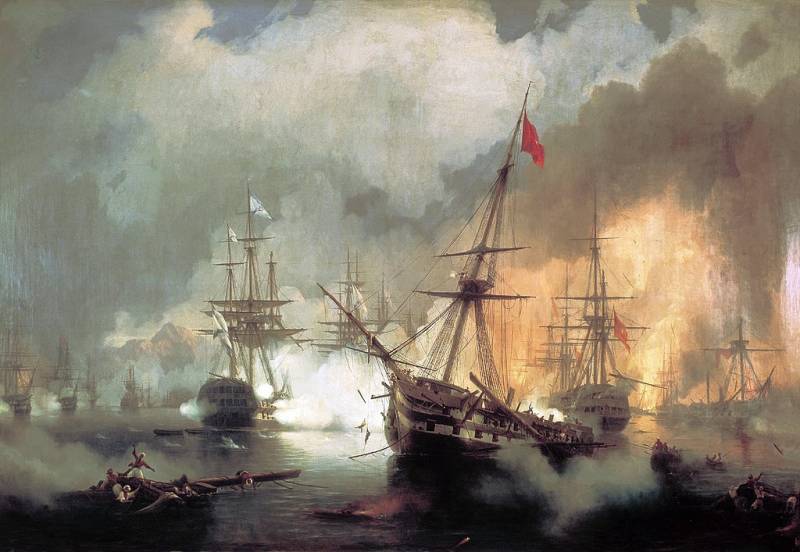
Ivan Aivazovsky "Navarin battle"
Petersburg Protocol
The Russian emperor Alexander I pursued a policy of legitimism in relation to the Greek revolution, denying the rebels the right to rebel against the Ottoman sultan, not using the Greek question in the national interests of Russia (How Alexander I Missed the Opportunity to Use Greece to Divide the Ottoman Empire).
England immediately took advantage of this, which proclaimed the rebels a belligerent, recognized their right to blockade ports and allowed them to be openly supplied with food and other supplies in the ports of the Ionian Republic, which was a protectorate of Britain. The English general Richard Church and Lord Thomas Cochrane arrived in Greece, who tried to reconcile the warring Greek parties and worked on the transformation of the Greek sea and land forces. From 1827, Church became the commander-in-chief of all Greek land forces, and he was given the title of generalissimo.
The new Russian Tsar Nicholas I began to pursue a national policy, not focusing on the interests of the Old World, like his brother Alexander. Petersburg began to put pressure on Istanbul regarding the fulfillment of the conditions of the Bucharest peace. London offered its mediation. Sovereign Nicholas categorically refused to interfere with England in the negotiations between the Russian and Ottoman empires, but was forced to agree to British participation in resolving the Greek issue so that London would remain neutral in the future Russian-Turkish confrontation.
On April 4, 1826, an agreement between Russia and England was signed in the Russian capital. From the Russian side, the protocol was signed by Foreign Minister Nesselrode and Ambassador to London Lieven, and from the British side by the emissary of the British government, Duke Arthur Wellington.
Both powers recognized Greece's right to independent existence, but the Greeks had to pay tribute to the Porte. The supreme power of the Sultan was preserved, who recognized the elected head of Greece. Turkish lands in the Morea and on the islands went to the Greeks for ransom. Russia agreed to the mediation of England in the negotiations between the provisional Greek government and the Porte. In the event that Istanbul rejected the proposal for British mediation, a “general or individual” impact on the Ottoman Empire and the Greek side was envisaged for their reconciliation.
Austria, Prussia and France were invited to join the Petersburg Protocol. France, which had commercial and political interests in Greece, agreed. Austria and Prussia refused, fearing the strengthening of Russian influence in the Balkans.
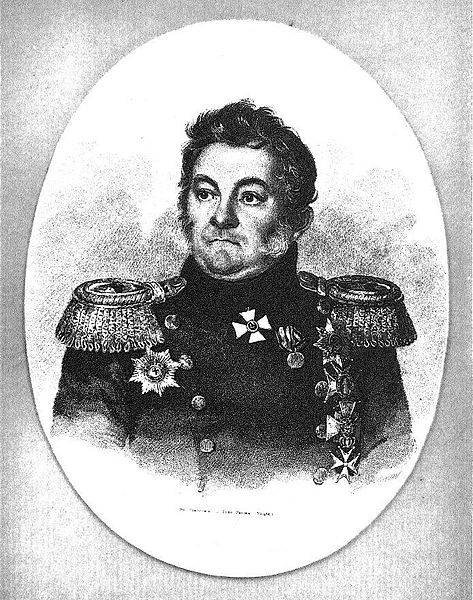
The commander of the Russian squadron Login Petrovich Geiden (he kept his flag on the Azov)
London convention
On July 6, 1827, Russia, England and France signed a convention in London on the formation of an autonomous Greek state. The parties undertook to offer Turkey mediation for the purpose of reconciliation with the Greeks. Greece maintained a formal dependence on the Sultan and paid tribute. Turkish property in Greece was redeemed.
The secret article of the convention, included at the insistence of Russia, assumed, in the event of the Sultan's refusal to put up, the rapprochement of the allies with the Greeks, and the possible unification of the naval squadrons of the three countries in the Mediterranean Sea to force Turkey to peace.
Sultan Mahmud II, whose armed forces on April 24, 1827 won a convincing victory over the Greek rebels at Phaleron, rejected the proposals of the great powers.
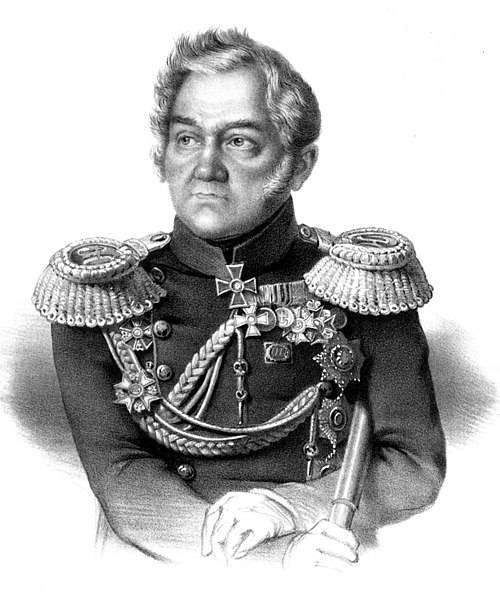
MP Lazarev - the first commander of "Azov". Engraving by P. F. Borel from a drawing by I. Thomson (1834).
Third Archipelago Expedition
Back in 1826, Russia began to prepare a squadron on the Baltic Sea for a campaign in the Mediterranean. A detachment of Baltic ships was sent to the Mediterranean fleet under the command of Admiral Bellingshausen as part of the battleship Tsar Konstantin and the frigate Elena. The detachment operated in the Mediterranean Sea until the summer of 1827 with the aim of cruising and reconnaissance for future actions of the Russian squadron.
The Mediterranean squadron included 9 ships, 8 frigates and 3 corvettes. On June 2, 1827, Emperor Nikolai Pavlovich himself arranged a solemn review of the fleet in the Kronstadt raid. On June 10, the squadron went to sea under the command of Admiral Senyavin. In July the squadron was in Portsmouth. Due to the intrigues of Nesselrode, only a detachment of ships of Rear Admiral Heyden went further, consisting of 4 ships (84-gun "Azov", 74-gun "Gangut", "Ezekiel" and "Alexander Nevsky"), 4 frigates ("Agile", "Konstantin", "Elena", "Castor") and one corvette ("Thundering").
In August 1827, the Heiden detachment went further, the rest of the ships with Senyavin returned. On October 1, the Russian squadron near the Ionian Islands connected with the English and French squadrons. The British squadron of Vice Admiral Edward Codrington consisted of 12 ships (including 3 battleships and 4 frigates), the French squadron of Rear Admiral Henri de Rigny - 7 ships (including 3 battleships and 2 frigates).
Before the arrival of the Russians, the British and French were cruising near the Bay of Navarino, where the Turkish-Egyptian fleet of Ibrahim Pasha stood - 57 ships (including 3 battleships and 17 frigates, several frigates were large, like ships), 11 fireships, more than 2,1 thousand in total. guns. The crew of the fleet is about 22 thousand people. Turkish ships, located in the form of a compressed crescent, were guarded by the artillery of the Navarin fortress and coastal batteries of about. Sphagia (total 165 guns). Ships and frigates were in the first line, corvettes and brigs were in the second and third, fireships were on the flanks. Transports and merchant ships were on the eastern coast of the Morea.
Coastal batteries covered the entrance to the bay and the flanks of the Turkish-Egyptian fleet. This calmed the Turkish commanders. The very arrangement of the fleet in three lines was unsuccessful, as it did not allow them to use their numerical advantage in artillery, ships from the second and third lines could hit the ships of the first line. However, the Turkish command was confident in the impregnability of its position, so the proposals of the allies were perceived as a sign of weakness.
Arriving at Navarino, the commander of the Russian squadron, Rear Admiral Heiden, and the chief of staff, Captain 1st Rank Lazarev, offered the allies decisive measures against the Ottomans if they did not stop the atrocities in Greece. On October 5, the allies presented the Ottoman commander in chief Ibrahim Pasha with a demand to stop hostilities against the Greeks, which was rejected.
Then, under pressure from the Russian commanders, the Allies agreed to enter Navarino Bay in order to force the Turks to stop hostilities by their presence. The allied admirals made a mutual promise to crush the Ottomans if their fleet fired even one shot at the allied fleet.
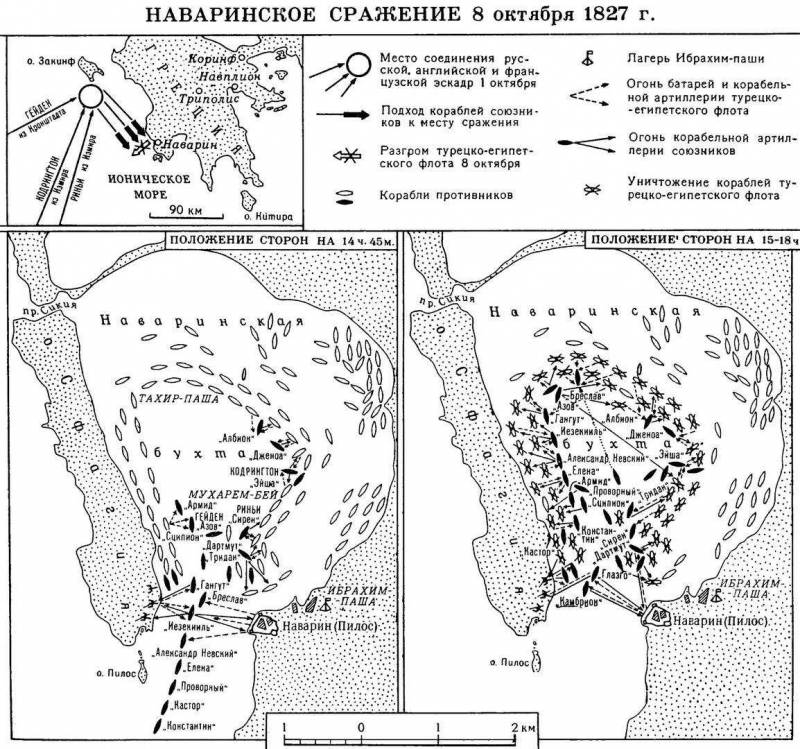
Defeat
On October 8 (20), 1827, the allied fleet began to be drawn into the Navarino Bay. The combined fleet consisted of 10 ships, 9 frigates, 5 brigs, 1 schooner and 1 boat with a total armament of 1 guns. The number of crews is 300 thousand people.
Admiral Codrington, having decided to enter Navarino Bay, gave a general disposition. Three French ships and a frigate, three English ships took up position against the left wing of the enemy. Three frigates of the British and French were located against the three extreme right-flank ships of the enemy. Other Anglo-French ships were sent against fire ships.
The Russian squadron stood up against almost the entire enemy center and right wing. That is, 8 Russian battleships and frigates were opposed by 11 enemy ships of the first line and about 40 from the second and third. Against 10 Anglo-French ships there were 10 Turkish-Egyptian ships of the first line and about 20 ships of the second and third. Ottoman ships from the right flank could cross-fire on the Russians, while the position of the Anglo-French ruled out such a possibility.
Codrington did not want to fight and gave the order not to fire without a signal. However, the Ottomans themselves provoked the battle. When the Russian ship "Azov" entered the bay, coastal batteries opened fire. Almost simultaneously, the Turks killed two English envoys sent to their ships. Despite the active enemy shelling, the Russian ships did not return fire until they anchored according to the disposition.
Having anchored, the allies opened fire at 14 o'clock. The battle lasted 4 hours. The main role was played by Russian and British ships.
The French admiral de Rigny lost control of the squadron from the very beginning. The battleship Scipio did not take part in the battle at all. During the deployment period, he got stuck with his bowsprit in the shrouds of an enemy fireship, and this was the end of his participation in the battle. The Turks set fire to their firewall, the fire spread to the ship. But the French were able to bring down the flames. Rowing ships pulled the fireship from the Scipio, and it sank. The second French battleship Breslavl stood in the center for a long time and was inactive. Only at the end of the battle did he go to the aid of Azov and Albion. He stood next to the allies and opened fire. The third ship "Trident" could not take its place in the disposition.
The British flagship "Asia" fought with two enemy ships at once. Several guns were disabled on it, the mizzen mast was shot down. The Russian ship "Azov" supported the "Asia" with fire. Two allied flagships destroyed the second enemy flagship under the flag of Muharrem Bey (Moharem Bey). Then "Azov" damaged the enemy's 80-gun battleship, which ran aground, drowned two frigates and a corvette.
After the battle, there were 153 holes on the hull of the Russian flagship. In the battle, 24 lower ranks were killed, 6 officers and 61 lower ranks were wounded. The ship had an excellent crew headed by Captain 1st Rank Mikhail Petrovich Lazarev. Under his command were the future heroes of the Crimean campaign: Lieutenant Nakhimov, midshipman Kornilov and midshipman Istomin.
Other ships of the Russian squadron also fought bravely. "Gangut" of the captain of the 2nd rank Alexander Avinov sank two enemy frigates, "Alexander Nevsky" of the captain of the 2nd rank Luka Bogdanovich captured the Turkish frigate.
As a result, the Russian squadron took the main blow and defeated the center and the right wing of the Turkish-Egyptian fleet.
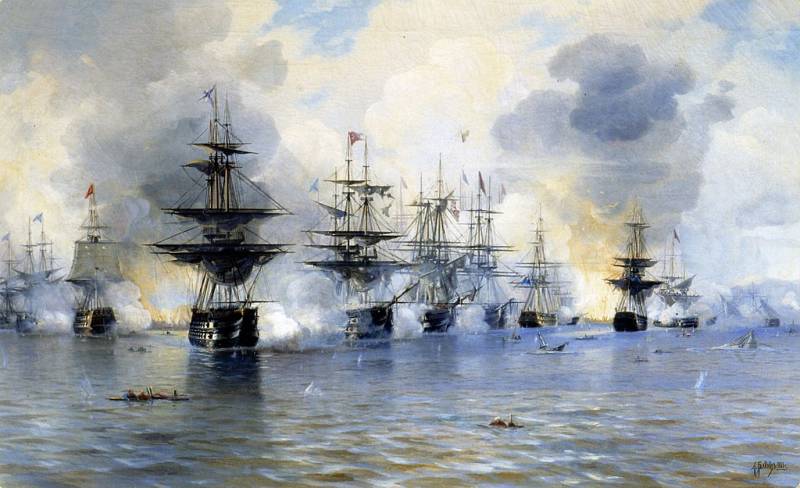
Leonid Blinov. Battle of Navarino
The Turkish-Egyptian fleet was actually destroyed: more than 60 ships and vessels (including 3 battleships, 9 frigates, 24 corvettes, 14 brigs), losing about 7 thousand people killed. The remaining ships were badly damaged and lost their combat capability. The Allies did not lose a single ship, over 800 people were killed and wounded.
The defeat of the Turkish-Egyptian fleet in the Battle of Navarino significantly weakened the Turkish naval forces, which served as a significant contribution to Russia's victory in the further Russian-Turkish war of 1828–1829. This victory provided support for the Greek national liberation movement, Greece achieved independence.
It was not possible to force the Ottoman Empire to peace. In December 1827, the Ottoman Sultan Mahmud addressed the people with an appeal, where he accused Russia of the difficulties that befell the Ottoman Empire. Allegedly, the Russians organized the Greek revolution. All Muslims of the empire were called to jihad against the infidels. The Ottomans began to fortify fortresses on the Danube.
In view of the hostile actions of the Porte, Tsar Nicholas I on April 14 (26), 1828 declared war on the Ottomans and ordered the army stationed in Bessarabia to enter the Ottoman possessions.
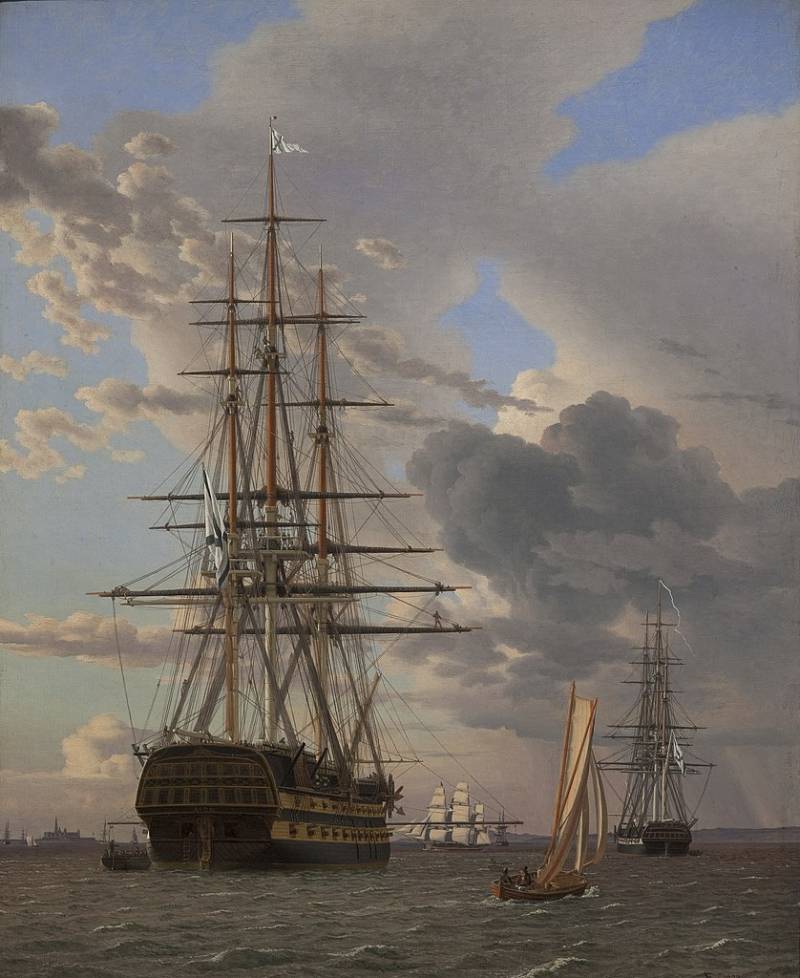
The battleship "Azov" on the roads of Elsinore. Hood. Christoffer Eckersberg, 1828
Information